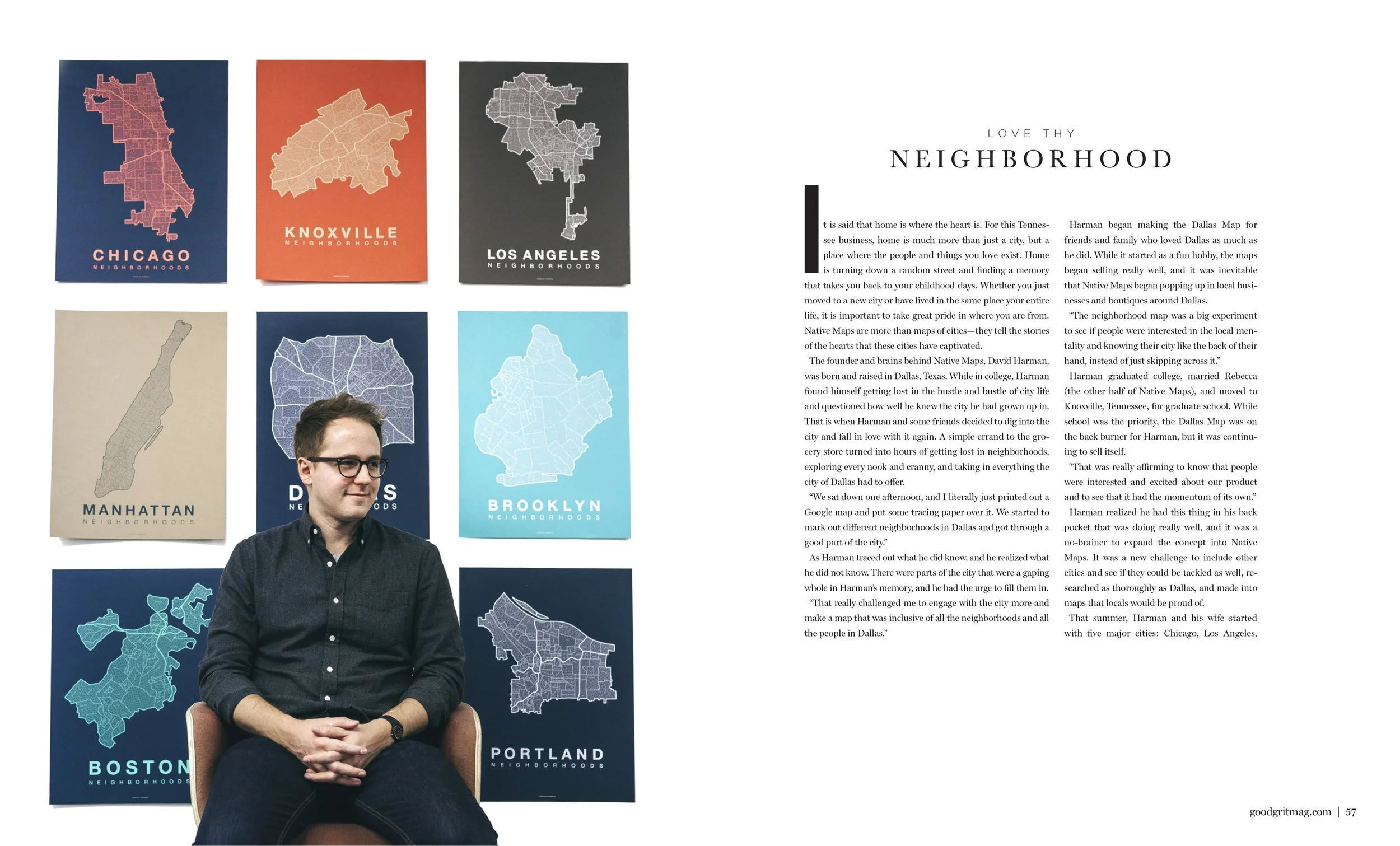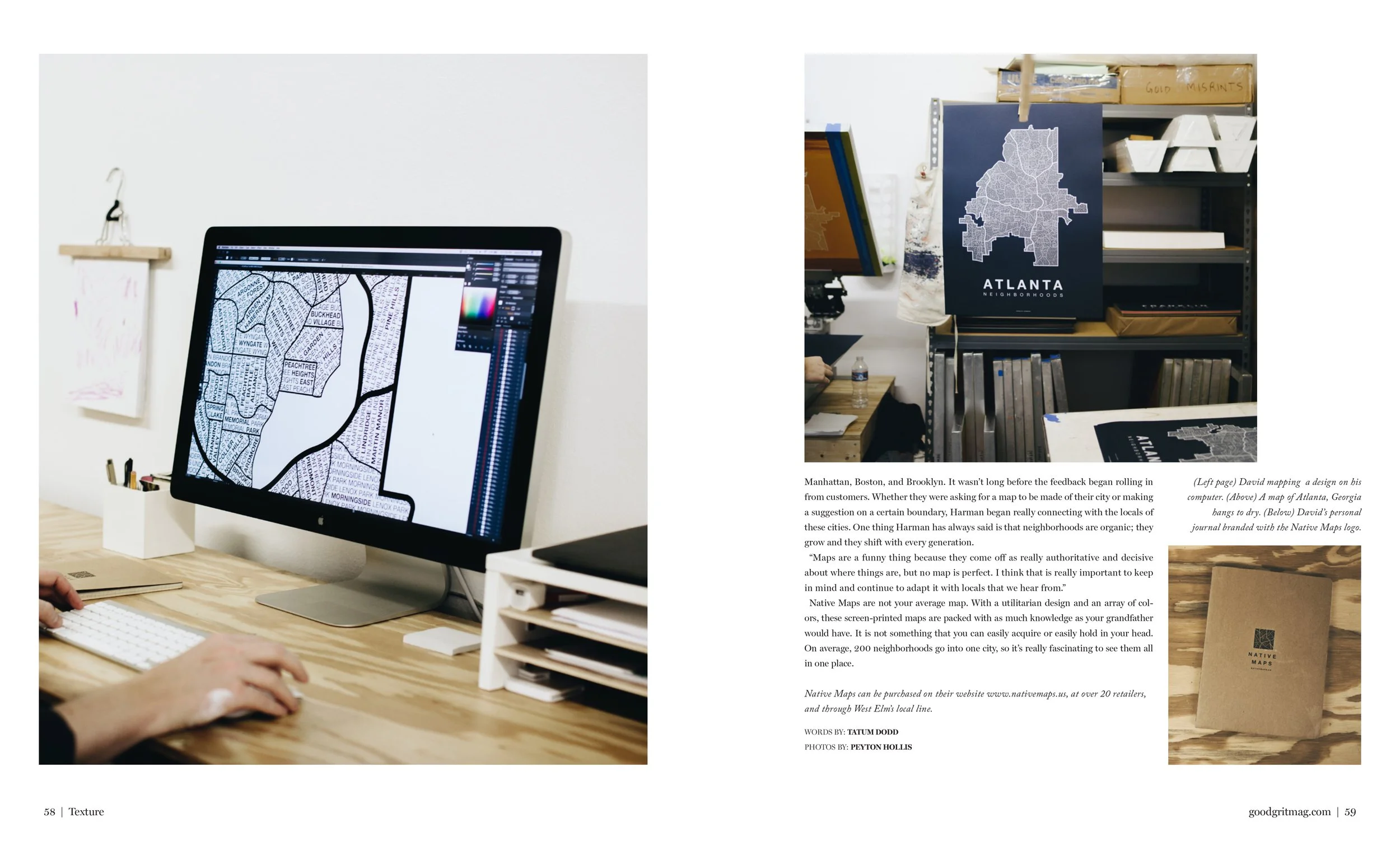
It is said that home is where the heart is. For this Tennessee business, home is much more than just a city; it is a place where the people and things you love exist. Home is turning down a random street and finding a memory that takes you back to your childhood. Whether you just moved to a new city or have lived in the same place your entire life, taking great pride in where you are from is important. Native Maps are more than maps of cities—they tell the stories of the hearts these cities have captivated.
The founder and brains behind Native Maps, David Harman, was born and raised in Dallas, Texas. While in college, Harman found himself getting lost in the hustle and bustle of city life and questioned how well he knew the city he had grown up in. That is when Harman and some friends decided to dig into the city and fall in love with it again. A simple errand to the grocery store turned into hours of getting lost in neighborhoods, exploring every nook and cranny, and taking in everything the city of Dallas had to offer.
“We sat down one afternoon, and I literally just printed out a Google map and put some tracing paper over it. We started to mark out different neighborhoods in Dallas and got through a good part of the city.”
As Harman traced out what he did know, he realized what he did not know. Some parts of the city were a gaping hole in Harman’s memory, and he had the urge to fill them in.
“That really challenged me to engage with the city more and make a map that was inclusive of all the neighborhoods and all the people in Dallas.”
Harman began making the Dallas Map for friends and family who loved Dallas as much as he did. While it started as a fun hobby, the maps began selling really well, and it was inevitable that Native Maps began popping up in local businesses and boutiques around Dallas.
“The neighborhood map was a big experiment to see if people were interested in the local mentality and knowing their city like the back of their hand, instead of just skipping across it.”
Harman graduated college, married Rebecca (the other half of Native Maps), and moved to Knoxville, Tennessee, for graduate school. While school was the priority, the Dallas Map was on the back burner for Harman, but it was continuing to sell itself.
“That was really affirming to know that people were interested and excited about our product and to see that it had the momentum of its own.”
Harman realized he had this thing in his back pocket that was doing really well, and it was a no-brainer to expand the concept into Native Maps. It was a new challenge to include other cities and see if they could be tackled as well, researched as thoroughly as Dallas, and made into maps that locals would be proud of.
That summer, Harman and his wife started with five major cities: Chicago, Los Angeles, Manhattan, Boston, and Brooklyn. It wasn’t long before the feedback began rolling in from customers. Whether they were asking for a map of their city or making a suggestion on a certain boundary, Harman began connecting with the locals of these cities. Harman has always said that neighborhoods are organic; they grow and shift with every generation.
“Maps are a funny thing because they come off as really authoritative and decisive about where things are, but no map is perfect. I think that is really important to keep in mind and continue to adapt it with locals that we hear from.”
Native Maps are not your average map. With a utilitarian design and an array of colors, these screen-printed maps are packed with as much knowledge as your grandfather would have. It is not something that you can easily acquire or easily hold in your head. On average, 200 neighborhoods go into one city, so seeing them all in one place is fascinating.


